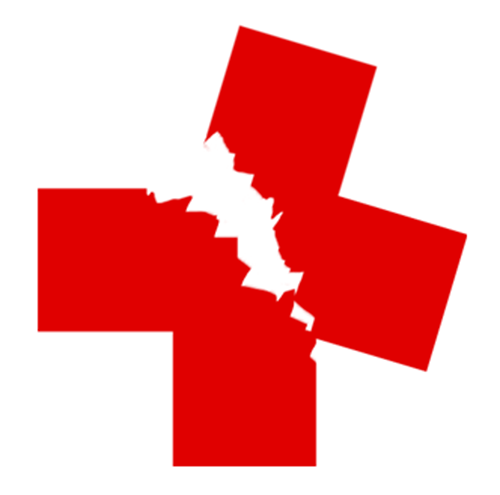Do you reconcile your collections daily?

When your practice receives payments by cash, credit card or checks, do you have a way to reconcile your practice with your bank account? Reconciling your bank account with the collections you receive at your practice is something they teach in business school, but not in Chiro School. Co-payments are being taken from your patients every day but checks from insurance companies come in by mail, weeks after the date of service. How do you keep track of everything and everybody? The Genesis Chiropractic Billing Software can eliminate this memory management with several built-in tools to reconcile your finances. Learn how with the free webinar that can be viewed right on this page. Read the Transcript: Jason: All right we’re gonna get started here. We’re just going to type out the message one more time to the people and then we’ll get going. And I’m grateful as always to have Jessica Pancoast, head of our health [inaudible 00:00:12] training team here with me. My name is Jason Barnes, and today we’re actually talking about something relevant to every single practice out there. Each day you’re seeing patients and there are all sorts of things that you wanna track and make sure that it went well, you know, how many patients were checked in versus checked out, how much money was brought in checks, cash or maybe even in patient payments versus insurance payments. You wanna make sure that, you know, there wasn’t something that went really off the rails for that practice…for your practice that day. And today, we’re gonna talk about how to reconcile at the end of the day to make sure you’re tracking all of the things that are important to you, number one. And number two, how to help your staff gain clarity on what their job and what their role is so at the end of the day when they come to report to you or they’re able to leave the practice for the day, they know that they’ve got everything done that they were supposed to. And that clarity really leads to ownership and in our experience where we see that front desk person or the office manager really has an understanding of how that practice is supposed to run, and what’s supposed to happen at the end of the day to make sure that all money was collected and all patients got taken care of, then they typically feel much more vested in the success of the practice. So, that’s the subject matter for today and that’s how we’re gonna go about tackling this. Two, we’re gonna divide this into a couple of different categories and we’re gonna start out with money. Money is just never a bad place to start out with, right? So one of the simpler things that each practice expects to be done every single day is, patients walk through the door, they’re paying copayments, coinsurance, deductibles and deductible season is rapidly coming to an end, but I still see it happening. And all of that money that came through the door, in addition to any paper checks or even electronic trust funds transfer, [inaudible 00:02:21] for the day, how do we make sure that all of the things that get posted in the system in Vericle are actually, you know, getting to the bank account? So we’re going to start out with how to we’re gonna actually reconcile those two things. So just one little recommendation as far as where should they go and what should they look at first if they’re going to try and reconcile how much money came into the practice versus what they’re actually gonna deposit for that day? Jessica: Well, there is a number of different reports in our system. What I usually recommend for reconciling the cash and the paper checks that they got from their patient is actually in the checking cash report. It breaks it down…the cash, of course, is all on together and nothing specifically add in a random code in the check number when they’re adding it on the patient account. But the check in cash report will break it down by each check number, so it’s a lot easier to match it up check number by check number. And that way as something’s entered in the system, they’re able…and can’t find the check they know exactly what check they’re missing and exactly which patient it’s from and vice versa. If they have a check and they can’t find it on that report, they know that that check was not entered. Jason: Oh, perfect. And we’ll show them that in just one second. But I’ve visited a lot of practices, and I’ve been there at the end of the day. I was in Vegas last year with a real high volume practice. You know, they had a couple of inboxes, right? And they had the drawer where they have the checks from the patients and the cash from the patient, you know, they have a credit card machine right then and there. Hopefully, they’re using an integrated credit card solution where they’re able to run that report and see exactly, you know, what number was associated with credit card bookings for that day. But, in the drawer right next to it was backed up all the checks that they received from the insurance company. So, what you’re describing, though, wouldn’t just help them with the cash, right, that they received from patients. They will use that same process for any insurance checks that they got as well, right? Jessica: Yeah, so any insurance check that they got, if they are using one of our billing teams, they’ll send over those BOPs [SP], the team will post them and then they’d be able to match it again on that same exact report. If they are posting those checks themselves, it’s just the same as posting patient payment so they’d be able to verify it right away. Jason: Thanks, nice. All right.
Is It Time We Return to Function?

Chiropractic at its root is a wellness-based philosophy. It is about freeing the nervous system to optimize function, not just treat pain. Unfortunately, many of our patients, our staff, and even Chiropractors themselves have forgotten this, focusing instead on pain relief. Now, I think that it is about time we remember where we came from and the true power of Chiropractic and return to function. The healthcare system today is broken. It is based on treating disease or the symptoms of disease rather than on prevention. The healthcare system today is broken. It is based on treating disease or the symptoms of disease rather than on prevention. The problem with that is when a patient presents with migraines, it is not because they don’t have enough migraine medication in their system. The migraine is instead, only a symptom of the root problem. When our patient comes in to be treated for migraines, or back pain, neck tension, and a host of other problems, it is easy to fall into the trap of offering adjustments to relieve their pain. Even more, when a patient does experience relief but is not educated about how Chiropractic works to optimize the function of their body, it is likely that they will assume adjustments are nothing more than a treatment for pain. There is no doubt that the benefit of pain relief derived from an adjustment can be enormous. However, when we neglect to educate our patients and our staff and to demonstrate that the adjustment is eliminating nerve interference that is decreasing body functioning and causing pain, we set our patients and ourselves up for failure. An uneducated patient is one who will only come into our office when they are in pain. They don’t understand the power of regular adjustments to keep their body functioning at optimum levels. They completely miss the true benefit of Chiropractic. Educated patients, on the other hand, are the life-blood of a practice. Patients who understand that disease is not a natural state and that the body has the power to heal itself when nerve interference has been eliminated become patients for life. They are also the patients who refer their friends, family, and someone they just met in line at the grocery store because they want everyone to achieve lasting wellness as they have. In order achieve this level of educated patients in our practice, there are 3 steps we have to take: Remember why we became Chiropractors and immerse ourselves in a chiropractic philosophy Educate our staff on the origin and power of Chiropractic Create a Chiropractic education system in our practice This is an on going process that you should monitor daily to ensure the best results. Add the tasks of patient and staff education to a proactive practice management system, like Genesis Chiropractic Software, to make sure that you never let this all important part of your practice fall to the wayside. Every interaction that you or your staff have with patients that educates them and focuses on returning to wellness instead of treating pain or disease will return huge dividends in the future with loyal patients and many more referrals.
How Many Office Tasks Does a New Patient Generate?

When a new patient comes to your Chiropractic Practice, how many steps must your Front Desk person take to create a new patient account? Typically, a new patient comes in to fill out forms and then your Staff has to remember to copy their driver’s license and their insurance card. Next, the patient’s data has to be typed into a computer. Co-payments also have to be collected and future appointments need to be scheduled. Are all of these tasks being completed for every patient? How do you know? The Genesis Chiropractic Software can eliminate this memory management with a tool we call a Task Checklist. All of the steps are written down and turned into tasks that can be automatically assigned to your staff members. The Task Checklist is launched with every new patient and your staff will know exactly what to do without being told. The Practice Owner will be able to see at a glance if every task was done for every patient, which ensures a consistent patient experience in your office. It also gives you and your staff peace-of-mind knowing everything is done at the end of the day. Learn more with the free webinar that can be viewed right on this page. Read the transcript: Jason: Well, good afternoon everyone and welcome. Jason Barnes and Jessica Pancoast here for this week’s webinar, and this week we’re actually talking about all of those tasks that have to be done for every patient or for every day or for every month in your practice and remembering to figure out what those tasks are and making sure that they get opened and then done. Today we’re gonna talk about how we can more easily manage all those repeatable things that need to be done in your practice. So we’re going to…I think the term Jess, is reintroduce, reintroduce the task checklist because, you know, if you haven’t been reading all the release notes, we’ve got some new things which I think are kind of exciting, different ways we can manage these. So that’s what we’re talking about. We’ll give it another minute or two before we get started. Okay, let’s get started. I’ll do another brief intro. Jessica Pancoast is the head of our help desk in our training team. My name is Jason Barnes. Today we’re talking about operations of a practice. Those things that need to be done for let’s just say every new patient or every day you want your staff to do an end of day reconciliation, and there are steps that they have to remember to do, make sure they tally up the cash, make sure they tally up the…kind of previewing for next week, Jess…tally up all of the insurance payments and make sure we know what’s going in the bank account versus what’s posted in the system. Maybe you want to do inventory control on, you know, a certain time of the month, whatever it is. As a practice owner or an office manager, you wanna make sure that those tasks get done but sometimes just remembering to assign them to people can be a task in and of themselves. So today we’re going to talk about how we can, number one, identify what work in your office needs to be done on a repeated basis. Number two, figure out how we can create those items in a list somewhere. Number three, figure out how we can best execute those on a regular basis so that you as the practice owner or administrator can keep track of the fact that this work actually got done. The concept of what we’re gonna call a task checklist is not new. We used to call them ticket macros in our system, and Jessica just created or corrected me saying that they’ve been around for four years, not for three years. We’ve seen them more widely used in the last year or so by many of our practices. So, first of all, what exactly is a task? For anybody who’s not using our system which I believe most of the viewers end up being our users. They know what tasks are, uses are. But anyone who doesn’t know, a task is not an email. It’s not a notification that something happened. A task is an action item that needs to be done within [inaudible 00:03:12] by a certain individual. That task…and can you bring up a task work screen, Jess? Those tasks can range in varying spectrum from order more coffee cups to follow up on a no-show to get my credentialing done for Medicare. Any way you look at it, none of these tasks are created, you know, people ordering coffee cups is in no way on par with getting my credentialing done with Blue Cross Blue Shield. And so these tasks have a couple of things, and their anatomy is important. They have a priority associated with them, the critical tasks all the way down to low priority. And for us, we want everybody to understand that those priorities actually mean something. When we need something done, the people we assign it to, typically is not the only thing we’ve asked them to do, right? When I’m looking at an office manager role versus a front desk role, very different roles within an office. The front desk has to remember to do a lot of things though. Somebody checks in, how many things are they required to remember at that moment? Ensure they have an insurance card. Do they have a balance from a previous visit? Did they have their next visit showed up? I can keep going. How are they gonna remember to do all that? There are some old rock stars out there that do remember it every single time. But if you add to that saying “Order coffee cups,” or, you know, “Make sure that we get more vitamins in for this particular type,” that’s when you can start to throw people
It’s About Time We Made Chiropractic the Dominant Healthcare System

Haven’t you heard ever since Chiropractic school that Chiro should be the dominant healthcare system? I know that I have. Chiropractic allows the body to naturally heal itself, awakening the potential of our own nervous systems. With this power, why isn’t Chiropractic at the forefront of every healthcare journal, study, and the primary choice of care for the majority of patients? It should be. That is why today I want to talk about what it would take to actually make Chiropractic the dominant health care system in our country and what we can do to help because it is about time. Should Chiropractic be the Dominant Health Care System? Studies show that there is a tipping point in any movement. If you can get a certain percentage of the population to embrace an idea, from there it spreads organically. That tipping point is 20%. For us, this means that once 20% of the population embraces Chiro as a first choice for healthcare, the rest of the population will follow. The question is, how do we reach that tipping point? We only have approximately 50,000 licensed Chiropractors in the U.S. and not all of these are even in active practice. In order for this number of doctors to see 20% of the population, each one would have to see more than 1,000 patients every week. Is this possible? Maybe it is for some DC’s in high-volume practices but not all Chiropractors would want to complete that many patient visits each week. This means that we do not have enough Chiropractors in practice in our country to hit that goal of making Chiro the healthcare system that the majority of patients choose first. Without more students choosing to become Doctors of Chiropractic instead of medical doctors, engineers, lawyers, etc. Chiropractic cannot become the dominant system in this country. That brings us back to the same problem we have talked about in the past, the problem of making a career as a Chiropractor an attractive choice for these students. We have to show them that Chiropractic is not only a vital profession but can also provide them and their families the lifestyle they need and desire. To choose to be a Chiropractor, they can’t live in fear that they won’t be able to run a successful practice, see enough patients, or make enough money. They have to know that the time and money they invest in school will pay off in the future. There is only one way we can do this. Each of us as Chiropractors has to make our own practice successful. We have to use every tool available to us to improve the experience of our patients, bring in more patients, and create a thriving business. Every Doctor out there who is a success, who cares for patients every day, and who is spreading the message of the power of Chiropractic is showing those future students that it can be done, that Chiropractic is great career choice. We need those students, those future Chiropractors. We need more Chiropractors to see more patients. That is the only way we will ever reach that 20% tipping point and it is the way to finally make Chiropractic the dominant healthcare system. It is about time that we all work together to reach that goal.
